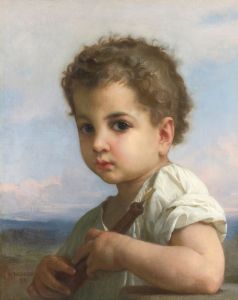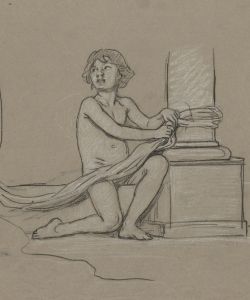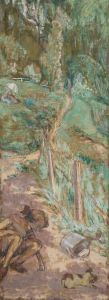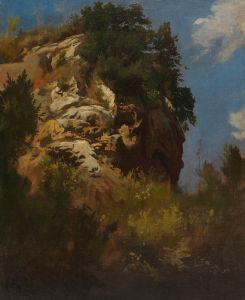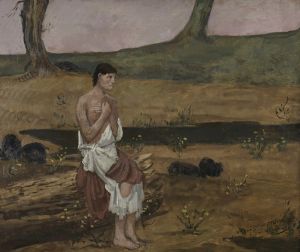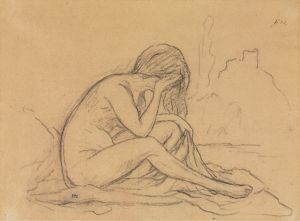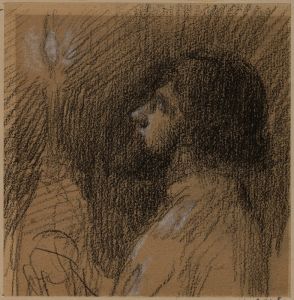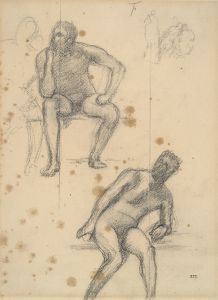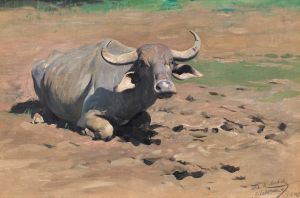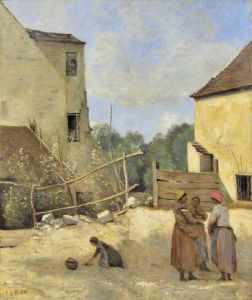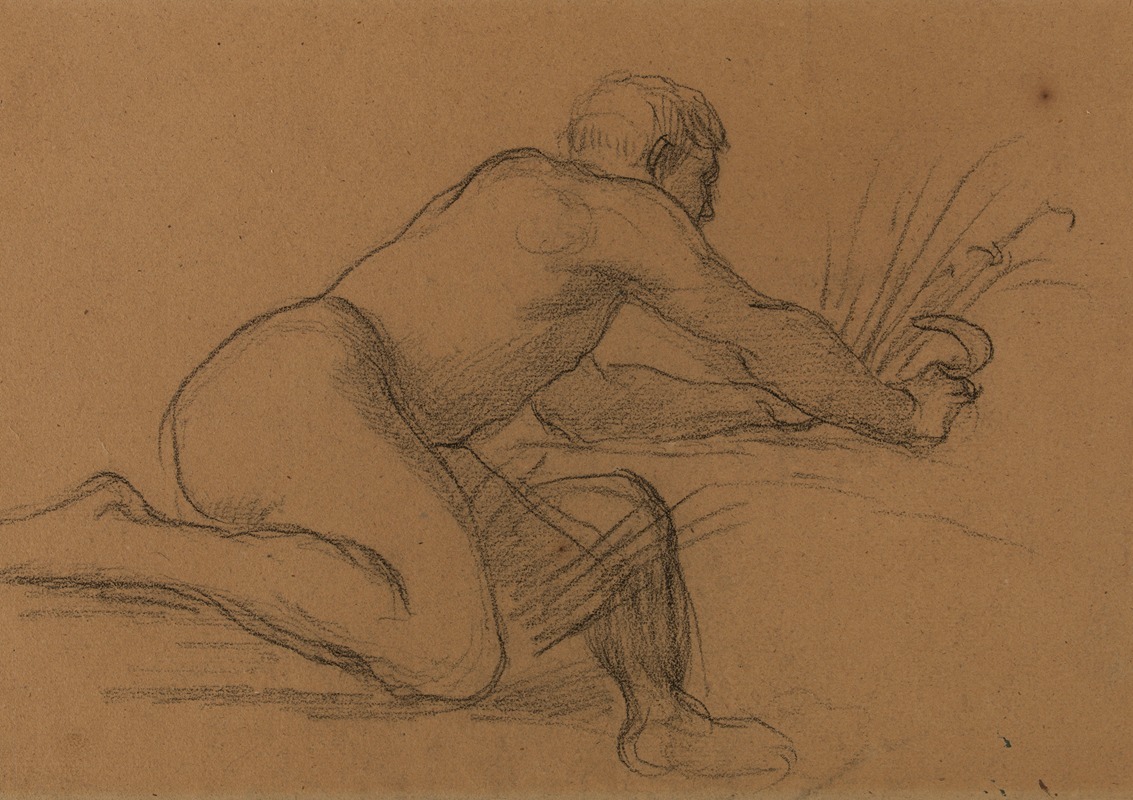
Homme nu accroupi coupant des herbes avec une faucille
A hand-painted replica of Pierre Puvis de Chavannes’s masterpiece Homme nu accroupi coupant des herbes avec une faucille, meticulously crafted by professional artists to capture the true essence of the original. Each piece is created with museum-quality canvas and rare mineral pigments, carefully painted by experienced artists with delicate brushstrokes and rich, layered colors to perfectly recreate the texture of the original artwork. Unlike machine-printed reproductions, this hand-painted version brings the painting to life, infused with the artist’s emotions and skill in every stroke. Whether for personal collection or home decoration, it instantly elevates the artistic atmosphere of any space.
Pierre Puvis de Chavannes was a notable French painter in the 19th century, renowned for his mural paintings and contributions to Symbolism. One of his lesser-known works is "Homme nu accroupi coupant des herbes avec une faucille," which translates to "Nude Man Crouching Cutting Grass with a Sickle." This artwork exemplifies Puvis de Chavannes' unique approach to composition and subject matter, reflecting his interest in classical themes and the human form.
Puvis de Chavannes was born on December 14, 1824, in Lyon, France. He initially pursued a career in engineering before turning to art, studying under several prominent artists of the time. His style evolved to emphasize simplicity, harmony, and a muted color palette, which became his signature. He often drew inspiration from classical antiquity, mythology, and allegory, which is evident in many of his works.
"Homme nu accroupi coupant des herbes avec une faucille" is a study of the human form, depicting a nude male figure engaged in the act of cutting grass with a sickle. The composition is characterized by its simplicity and focus on the figure's posture and musculature. The crouching position of the man suggests a moment of concentration and physical exertion, capturing a sense of timeless labor and connection to nature.
Puvis de Chavannes' work often conveyed a sense of timelessness and universality, and this piece is no exception. The choice to depict a nude figure in a natural setting aligns with his broader artistic goals of exploring the human condition and its relationship with the environment. The use of a sickle, a tool with historical and symbolic significance, further emphasizes themes of harvest, labor, and the cyclical nature of life.
While "Homme nu accroupi coupant des herbes avec une faucille" may not be as widely recognized as some of Puvis de Chavannes' larger mural works, it reflects his consistent interest in the human figure and his ability to convey complex themes through seemingly simple compositions. His work had a significant influence on later artists, including the Symbolists and Post-Impressionists, who admired his ability to evoke emotion and meaning through form and color.
Puvis de Chavannes' legacy is marked by his contributions to public art and his role in the development of modern art movements. His murals can be found in various public buildings in France, including the Panthéon in Paris and the Musée de Picardie in Amiens. These works continue to be celebrated for their aesthetic qualities and their ability to convey profound philosophical and allegorical themes.
In summary, "Homme nu accroupi coupant des herbes avec une faucille" is a testament to Pierre Puvis de Chavannes' skill in capturing the essence of the human form and his interest in exploring themes of nature and labor. Through his distinctive style and thematic focus, Puvis de Chavannes remains an influential figure in the history of art, bridging the gap between classical traditions and modern artistic movements.





